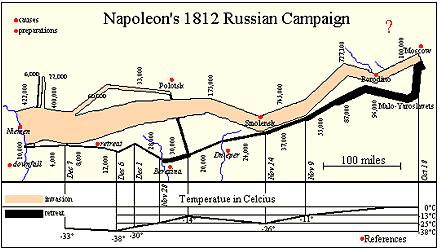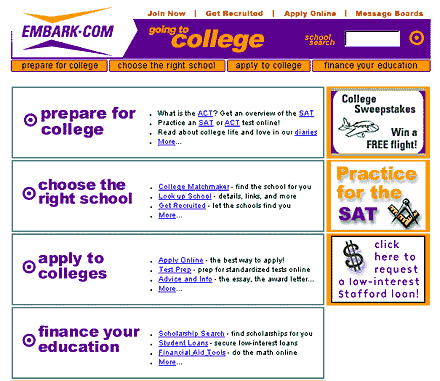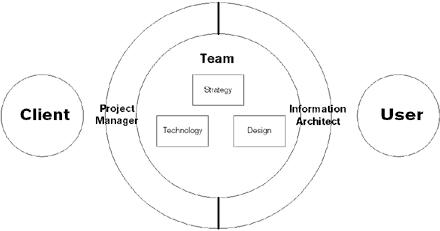| past petermemes | ||
|
April 28, 2000 April 27, 2000 So, you know, there's
gotta be something of sociological import in the development, publication,
and reception of the Elian
Wazzup video. It's such a remarkable crystallization point of
the Now of pop culture. The development points to how almost natural
satire is becoming in modern discourse as a method of communicating
ideas. The publication demonstrates the ease and speed with which
fairly normal Joes can create and distribute their ideas. The reception
illuminates the awesome capability of the internet to foment a literal
overnight phenomenon (I must have received at least 4 links to the
page... ). The cease-and-desist letter provides a classic example
of how The Old Ways just
won't work
any more.
Most delightfully, this is a story of how two schmucks were able
to turn the government (Janet Reno's minions), the press (AP photo),
and Big Corporations (Anheuser-Busch) on their heads with a bit
of creative splicing. And don't forget, there are dot coms filled
with venture capital and dozens of employees that would kill for
those hit numbers. Little. Yellow. Puffy. Marshmallow Peeps® are given T.W.I.N.K.I.E.S. project-like treatment. New for 2000: Fear response. Goofy kollidge kids with way too much free time on their hands. Strawberry Pop-Tart blow torches anyone? Iron constitution. I'm sure you're all *fascinated* with my dietary intake. So far today I've had two bowls of Kellogg's® Corn Pops®, three Krispy Kreme® Original Glazed Yeast-Raised doughnuts, and an In-and-Out hamburger "animal style" (dig all those 'special' styles!) with fries and a Dr. Pepper. April 26, 2000 April 23, 2000 April 22, 2000 Humming along while I'm reading, the album progresses to "Innocent When You Dream," a song with an amazing power over me. Listening to it, I inevitably choke up. Tears begin to well. Tom Waits has composed and produced a song that bypasses my rationality and plays directly to my limbic system. The experience defines "melancholy." When I lived in New York, after breaking up with a girlfriend, I had that song stuck in my head for a week. It was an oddly exquisite torture. April 20, 2000 I came away largely unscathed, just some scratches and abrasions and soreness in my stomach muscles. I suspect I'll pay for this tomorrow. Whenever I get in such a scrape (as a bicyclist, it happens a few times a year, though rarely this dramatically), I recall the line from Drugstore Cowboy, "There's nothing more life-affirming than getting the shit kicked outta ya'." April 19, 2000 Spacetime-waster. Jason points us to this fabulous little Java applet. April 17, 2000 RIP, Edward Gorey. My parents owned Amphigorey and Amphigorey Too, and as an inquisitive child riffling through our bookshelves, I was inevitably drawn to the books--they had pictures! I read and re-read such favorites as The Beastly Baby, The Gashlycrumb Tinies, The Chinese Obelisks, The Pious Infant, The Hapless Child. I didn't know from 'perverse,' then, and simply thought the stories were fun (well, except The Unstrung Harp, which I didn't 'get' until I was an adult). If I were ever to get a tattoo, it would likely be of the Doubtful Guest, his red-and-white scarf blowing behind him, his sneakered-feet pointing in opposite directions. Gorey's delicately macabre tales (well, I suppose Kate's death wasn't so delicate) proved an essential element in the formation of my sensibilities--a treasure I'll happily pass along to my children. April 14, 2000 April 13, 2000 You have to be careful to about too closely associating information architecture with its namesake, architecture. By and large, an architect's product is a fixed entity. This means the architect can design and develop it in a studio and simply pass it on to the owner.
Unfortunately, agencies that practice information architecture take this approach, desiging "the best" information architecture and handing it off to clients. Given the always-changing nature of the Web, the information architect's product cannot be fixed--the IA can try to develop a stable structure in which content is poured, but even that needs to be highly flexible. In his conference keynote, Lou Rosenfeld made a brief mention of how information architecture is far from being automated, because "you can't crack the IA nut until you've cracked the AI [artificial intelligence] nut." If information truly is dynamic, that makes the AI approach all the more difficult. However, the Web provides access to another, and potentially more powerful, intelligence--social intelligence. [A search on "social intelligence" at Google turns up all kinds of interesting links, some of which suggests I'm improperly using an established term. Oh well. It also led me to Bruce Edmond's home page, which I'll want to revisit--tasty thoughts on 'socially situated intelligence.'] The information architecture of my current favorite site, Launch.com, is most relevant when based on the relationships between information as devised by the community of users. I don't need a classification scheme to find music I like--I simply need to find a few people whose tastes are similar.
The dynamism of our information spaces are what makes megalithic hierarchies so fundamentally limiting. Not only does information change, but my relationship to that information changes, and trying to catalog it typically forces it into a lowest-common-denominator structure that serves no one by trying to serve everyone. This is why I go on about basic-level categories and heaps of metadata--by reducing information to its most basic level, we can build it back up on-the-fly depending on the user's context. After I blathered about this stuff, there was a line of folks at the microphone, most of them wanting to cart me off for labeling librarians as fans of restrictive hierarchies (which I didn't do, but I think my ramble got misinterpreted). Then Betsy Martens came up to the mic, and in addressing my thoughts, uttered a phrase that caused me to see light break through the auditorium ceiling and illuminate her: The calculus of information At which point I stopped thinking. Well, I stopped thinking in the moment. Look at that phrase. It's very powerful. And it so beautifully crystallizes what I was rambling about. The calculus was developed because we live in a dynamic world, and the tools of the time, Cartesian coordinates and Euclidean geometry, were limited to describing static phenomena. Iin order to successfully model, monitor, and predict dynamism, new methods were required, methods to track the rate of change over time. I think we're crossing that point with information spaces. We need to move away from the Cartesian-like models of information classification, and toward systems that allow us to better deal address this new hyper-fluidity. April 10, 2000
April 6, 2000 April 5, 2000 All over the map. This weekend I'm attending a conference titled "Defining Information Architecture," where folks from the traditional library science world are beginning a dialogue with Web design types, trying to figure out what we can all learn from each other. Per usual, my thoughts are scattered. Trying to cohere notions of user-centered design vs. information-centered design. The single task of 'research' that librarians support, versus the multiple tasks that information architects address. The strengths and weaknesses of classification schemes. Etc. April 3, 2000 A good place to start from, I'm looking forward to the dialogue it instigates. In order for information architecture (or whatever) on the Web to succeed, it must bridge the duality Jesse identifies--Web as software interface and Web as hypertext system. This isn't as easy as it might at first seem. Software tends to be far more task-driven--folks have goals they want to accomplish. Hypertext (and, more generally, publishing) is less focused. Even if you're doing research, hypertext isn't meant to drive you to a particular point--it's designed for exploration and discovery. One site that bridges well is Launch.com. Their software interface is obvious--lots of clicking and rating and choosing going on. The thing is, it's an interface that causes the relationship of content--it essentially helps build meaningful hypertext. This is not unlike what we're attempting at Epinions. (A main drawback of both Launch and Epinions being neither allows users to make direct hyperlinks themselves. Oh <A HREF>, where art thou?) A website that does what it should! Launch.com, and it's Launchcast application in particular, does not suck. It serves up some interesting musical selections I hadn't heard, based on things I've told it. The interface is fairly simple. There's a bit of a curve at the beginning. And it tends to crash too frequently. But it's what I've been listening to at work all day. Delightfully wide range of music available, too. No idea if it's worthwhile at 56k.
|
||


